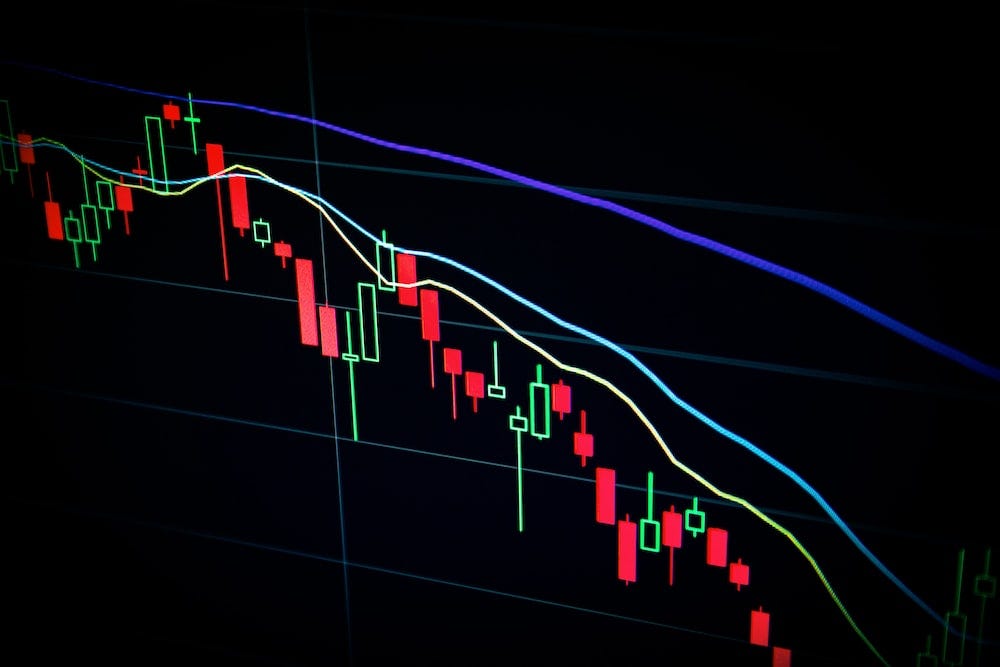The crypto industry is full of technical jargon and industry language that can often be difficult for a newcomer to wrap their head around. The technology is highly advanced and sophisticated, with terms like blockchain, decentralised, and cryptography enough to put off beginners.
One idea you might have come across is that of a bull market. While this is used often in the world of crypto and Bitcoin, it is in fact a much older term that can be applied to any kind of marketplace. Let's take a closer look at what a bull market is, how it can affect the Bitcoin Price, and discuss whether or not Bitcoin is becoming bullish. Read on to find out more.
What is a Bull Market?
Markets can be volatile and unpredictable. Investment options are highly susceptible to influence from external factors such as economic conditions or global events. Being able to predict the movement of markets is the key to being a successful trader.
The peaks and troughs of a market are what make it so difficult to analyse and predict what could be coming in the future. Potential investors will be waiting for prices to fall so they can buy, while holders will be waiting for prices to rise so they can sell and cash in.
When a market undergoes a period of long-term, sustained growth, this is commonly referred to as a bull market. The term has become somewhat diluted in recent times, with any period of success being deemed a bull market.
However, the true definition of the term stipulates a precise set of conditions that must be met if a market can be considered a bull market. A true bull market is a period when share prices rise by 20%, sandwiched between two periods of 20% decline.
For people who have bought stocks and investments during the preceding period of stagnant growth, a bull market can be a fantastic opportunity to recoup losses and make a profit.
What Causes a Bull Market?
Marketplaces usually reflect wider economic health at the time. Bull markets are no different, usually taking place when an economy is strong and growing.
High GDP and low unemployment rates generally lead to an increase in business profits. This in turn incentives investors and gives them the confidence to spend in the market. Increased spending stimulates growth, driving up prices, and encouraging other investors to get in on the action as they sense a bull market beginning. This creates a domino effect that can see markets grow significantly in relatively short spaces of time.
How has Bitcoin Performed?
Around this time last year, Bitcoin was thriving. It sat at a high of $48,240 towards the end of March, a period of success that was welcomed after a difficult December the previous year.
This strength wasn't to last. Bitcoin's price gradually fell as the year progressed. The downward trend was in tandem with a turgid global economy, leading many to assume that Bitcoin wasn't the decentralised revolution that many had promised.
Things hit a low, figuratively, and literally, in December 2022, when Bitcoin's price sat at a meagre $15,460. This period of stagnancy is what's known as a bear run, the complete opposite of a bull run, and it would seem Bitcoin was in the depths of a long and extended one.
However, investors were offered a glimmer of hope when Bitcoin's price began ticking up in March 2023. A slight jump gave way to an incredible rush, with the cryptocurrency's value leaping from $20,207 to $27,385 in just seven days.
Since then, Bitcoin has continued to grow, it currently sits at a price of $28,054, representing growth of 21% for the month and nearly 70% year to date.
Is Bitcoin Becoming Bullish?
Bitcoin has certainly enjoyed a period of success, but is it becoming bullish? To answer that, we must analyse the reasons behind Bitcoin's recent rally.
Traditionally, bull runs are caused by positive external market conditions. This certainly isn't the case for Bitcoin's current period of strength, quite the opposite in fact.
The collapse of Silicon Valley Bank, Signature Bank, and Credit Suisse, and the wider banking crisis being felt around Europe, has driven investors away from traditional options and towards more modern investments like Bitcoin.
Bitcoin is decentralised, which means it does not rely on banks and financial institutions, like those mentioned above, to sanction and authorize payments made using the currency. Instead, transactions are conducted directly between currency holders and logged on a fully transparent platform called the blockchain.
As investors lose faith in traditional banks, Bitcoin is there to assure them and offer them a more secure place to hold their money.
What's more, interest rates may be beginning to fall after a period of significant spikes. This should give investors more confidence and see the Bitcoin price grow even more.
Conclusion
Is Bitcoin becoming bullish? It's still too early to say for sure. However, the signs are looking promising, if growth continues as it has for the past month, the future could be very bright indeed for Bitcoin and the wider crypto industry.

